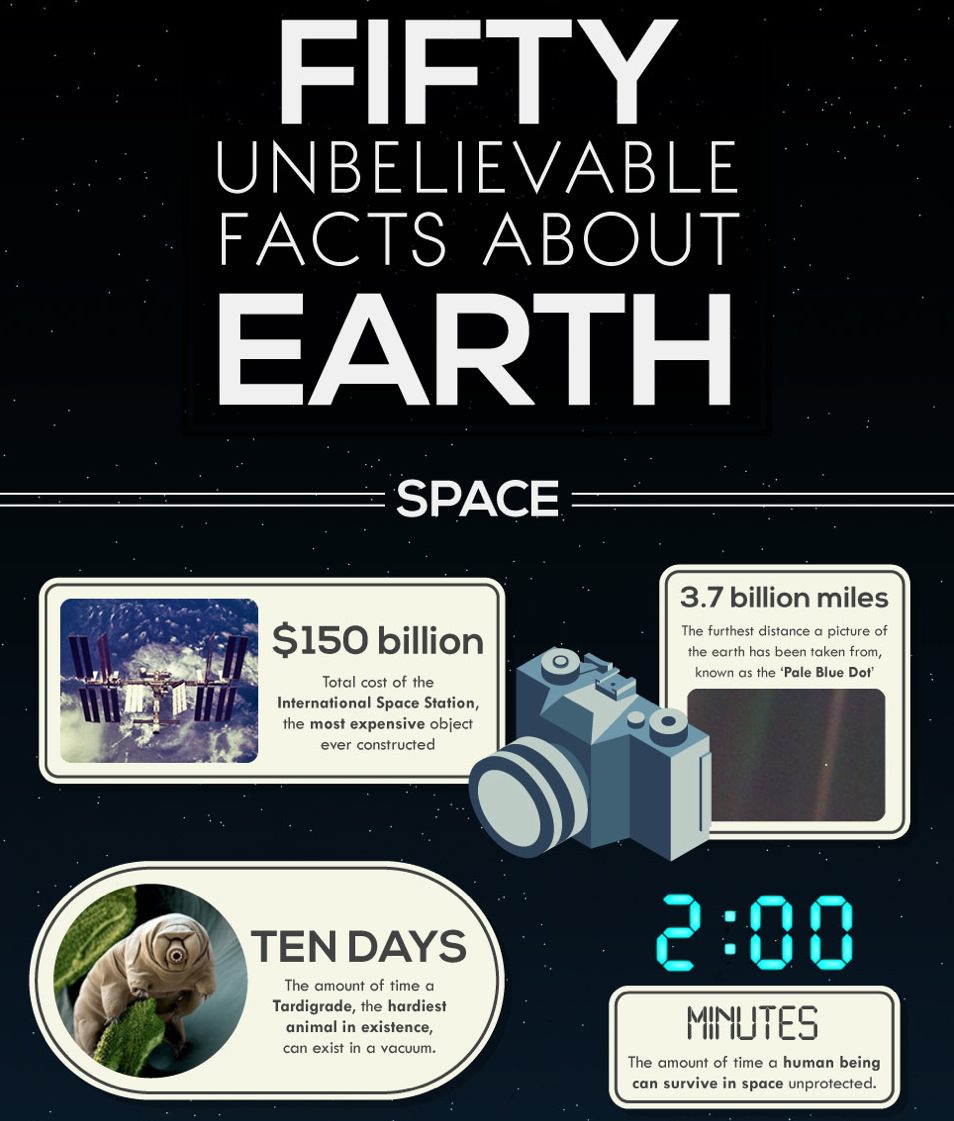Do you know how much material falls onto Earth from space every day? How many different species there are in the ocean? How far the continents move every year? In honor of Earth Day here’s a very cool infographic that answers those questions about our planet — and 47 more!
Check out the full version below:

And for more interesting information about our planet, click here and here.
Infographic provided by Giraffe Childcare and Early Learning (Dublin, Ireland)


Great post
Great job!well don sir.
Eden Earth. Home.
Proud to be a resident!
Excellent. I will be sharing this with people.
A pity that the dinosaur/oxygen thing is wrong (they’re thinking of Carboniferous insects). I don’t know if there are any other errors, but clearly their fact checking wasn’t thorough.
What a lovely infographic. Which is why I’m sorry to say that Adrian is right. Prehistoric oxygen levels had nothing to do with increased dinosaur size. Reproductive biology and the presence of air sacs in the biggest dinosaurs allowed them to get so large. If anything, oxygen levels might have been a little lower during the time of the biggest dinosaurs. I recently wrote an explainer all about this subject: http://phenomena.nationalgeographic.com/2013/02/25/dinosaur-reproduction-not-ancient-gravity-made-sauropods-super-sized/
Interesting. I’ll let the authors know. Thanks.
Ok, rather than enter into a discussion about how dinos did get so big (which is too complex for a factoid) I took it upon myself to revise it to something else entirely. (Via Robert Gonzalez’ article here: http://io9.com/could-you-outrun-a-tyrannosaurus-rex-470867213).
The highest temperature on Earth in Libya was de-certified by the WMO (World Meteorological Organization) in January 2012. The highest temperature recorded is now 134 degrees in Death Valley in 1913.
“Procuded by”? Oops.
Holy smokes. Not good for a learning center, eh? I had to fix that bit myself then.
I don’t know if someone else has already pointed this out, but the length of a solar day, which goes from noon one day to noon the next, and which is the one that really counts for us creatures here on the surface, is exactly 24 hours.
great chart of facts. pass it along too teach r kids.cuz most dont know this
Lovely infographic!!
Super helpful!!^^ and I really find the drawings attractive that makes the trivias more interesting.
uhhmm. there is someone who corrected about the “24 hours” thingy. Is ti really 24 hours or 23 hrs., 54 mns and 4sec.?